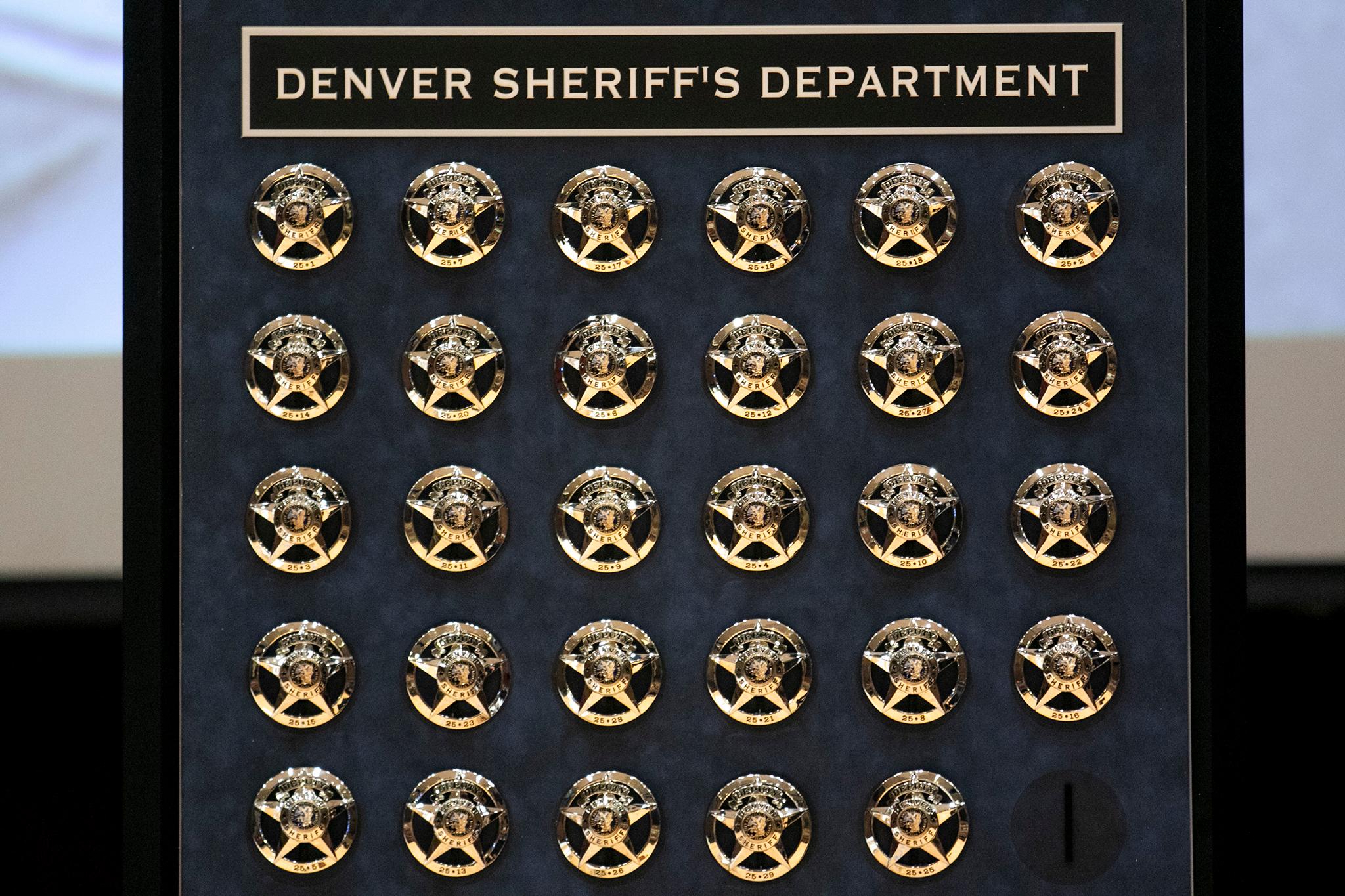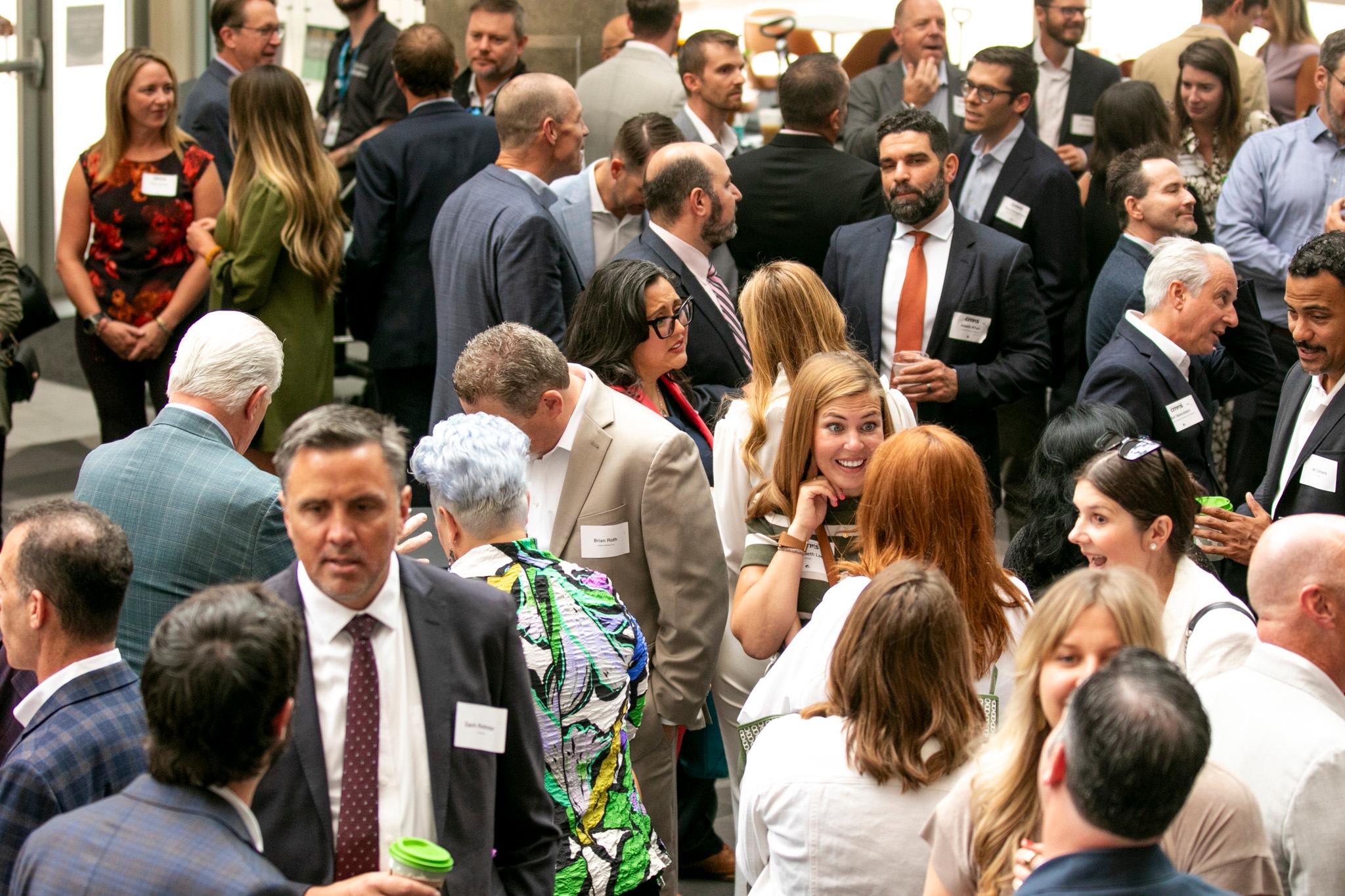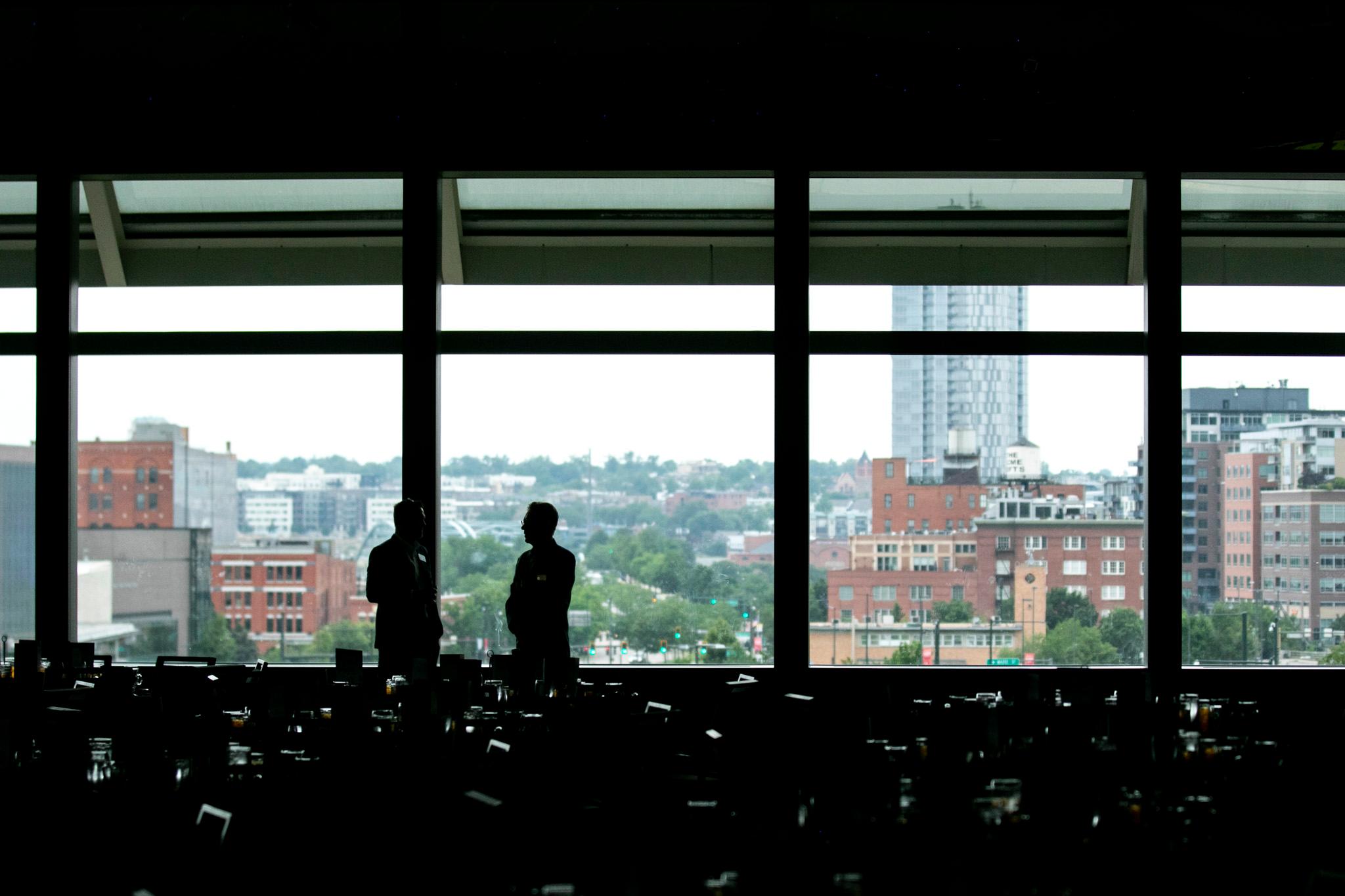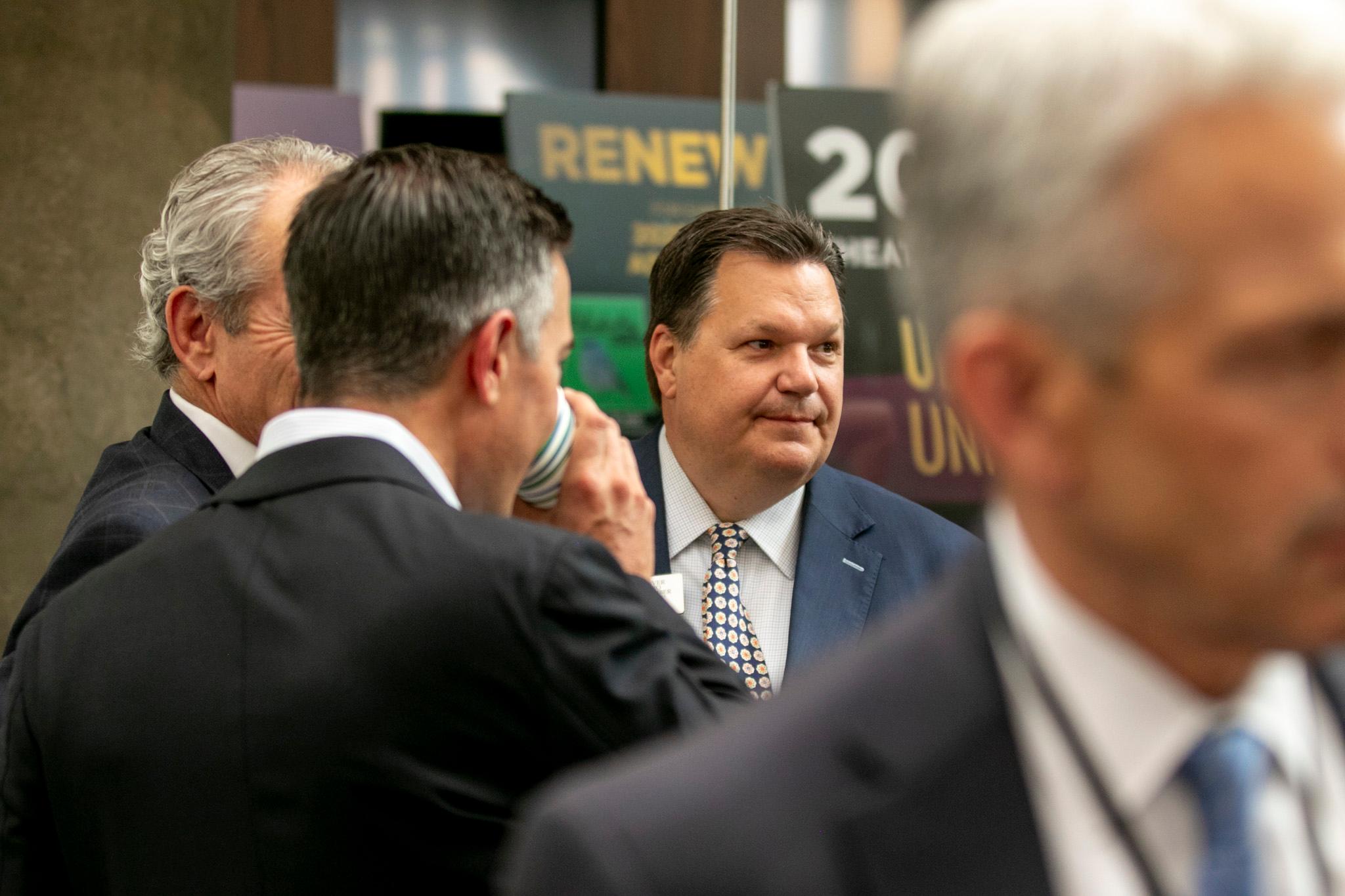Christina Pittaluga stared at her photos, wiping away tears.
It was the first time she'd seen the blown-up prints from her series "ARE WE STILL COOL?" in person. Through the glinting glass windows of the Colorado Convention Center, the images seemed almost to glow, and it struck her how massive they were, how visible to people passing by, and how the Big Blue Bear -- a sculpture she'd long admired -- stood mere yards from her own art.
"I'm kind of geeking out a little," she said breathlessly, her eyes darting from print to print. "They make me feel kind of tiny."
"ARE WE STILL COOL?", a photo series produced by Denver's Black Actors Guild, is the latest installment to be featured at Understudy, an art incubator that hosts temporary exhibitions of out of the Colorado Convention Center. Because of COVID-19, Understudy has had to rethink the way it operates, and has shifted to a "fishbowl" model. Patrons will be able to safely view the art from the street, just by peering through the glass as they walk by.
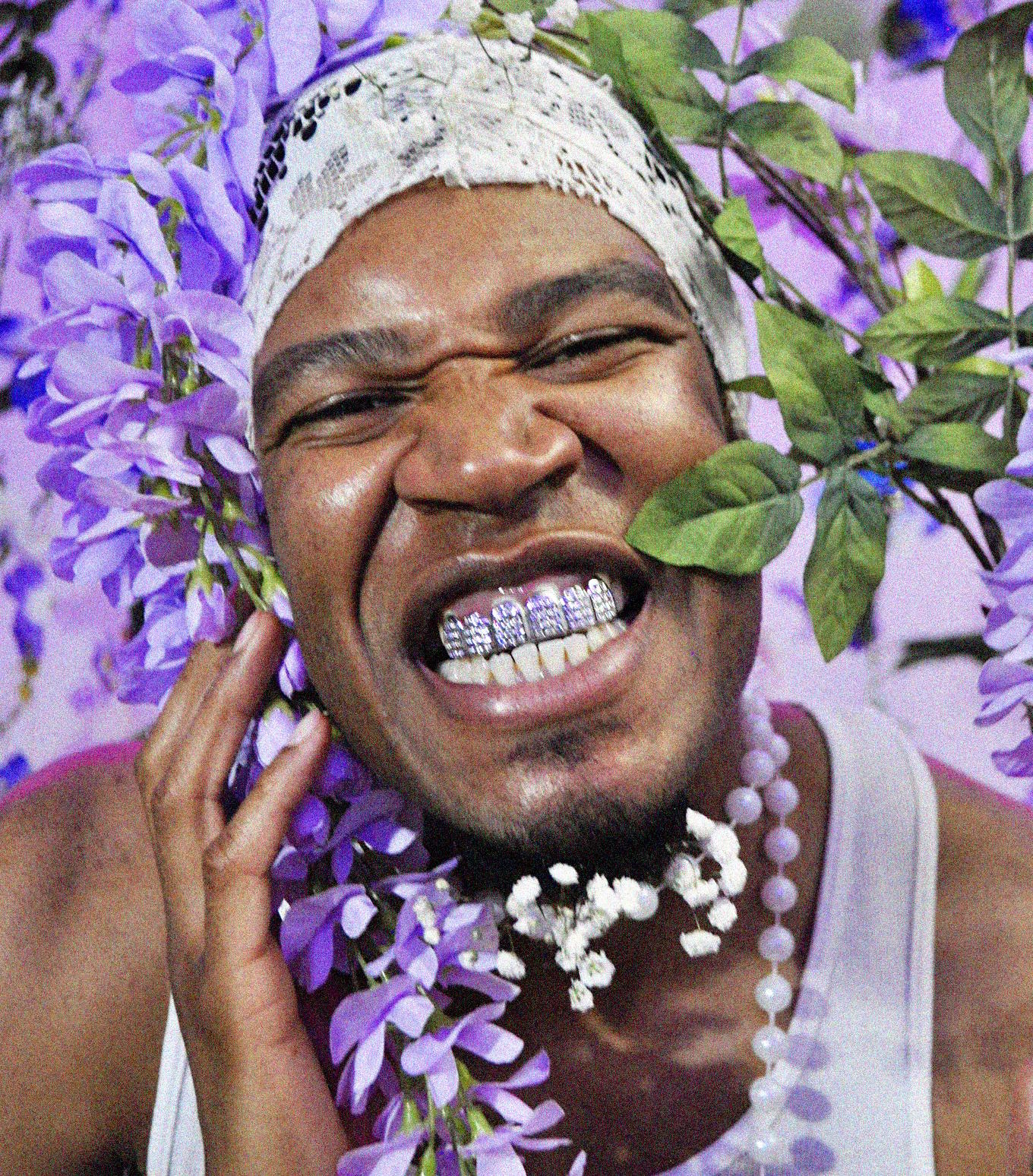
By
That level of visibility is a big deal for Pittaluga. This project is a very personal one.
The photos, which first dropped online in three parts earlier this summer, show 13 men and boys of color posing as if for Renaissance-era portraits, sometimes embracing one another and invariably decked out in tulle, pearls, flower petals and glitter. Pittaluga said the series is meant to challenge the ways in which men -- and especially Black and brown men -- are conditioned out of the softness they are born with. They are told that being a man means that they can't cry, that they can't be beautiful, that they have to be tough, to be the breadwinners of their household, she said. Overtime, their tenderness is buried beneath the weight of the expectations placed upon them. Pittaluga watched it happen to her own brothers while she was allowed to embrace and to find strength in her own tenderness.
"Being able to feel all the different emotions, that is where you're gonna be able to feel your strongest," she said. "If you go to therapy, talk about your feelings, or at least are open about the things you're feeling, that's going to make you, down the line, able to deal with a hard situation in a better, healthier way... Versus someone who is totally shutting off their soft side. They're gonna end up having a mental breakdown."
Pittaluga stewed in these thoughts for years. She saw beauty and tenderness in the Black and brown men in her life, in her own family, and was troubled that they couldn't see it in themselves, or that they weren't allowed to. She wanted to do something about it, but there never seemed an appropriate way to bring it up at the dinner table.
So last fall, she met up with photographers Michael Board II and Nadiya Jackson. Together, the team made plans to create 42 images -- 12 collages and 30 photos -- that showed Black and brown men embracing their softer sides. The project's title "ARE WE STILL COOL?" reflects the anxiety her models felt in doing so. Would they still be perceived as "cool" when decked out in glitter and pearls?
Realizing that the intimacy of the shoot might initially be uncomfortable for her models, Pitalluga worked to make it a safe, comfortable space, engaging all the senses to create that environment. She burned candles and incense. She chose costumes that were comfortable and soft to the touch. She made playlists of all of the models' favorite music. She offered them a home-cooked meal. And, through it all, she checked in with them about their level of comfort.
She said that, naturally, there were moments of unease. A lot of the men had issues with body dysmorphia. They'd tell her that they felt too fat or too skinny. She'd attempt to combat those insecurities with endless positive affirmations.
"I just wouldn't let them feel bad about themselves. Because too often people let men feel bad about themselves," she said. "I was just like, there's no way you're talking down on yourself, because I don't think you understand how pretty you look right now."
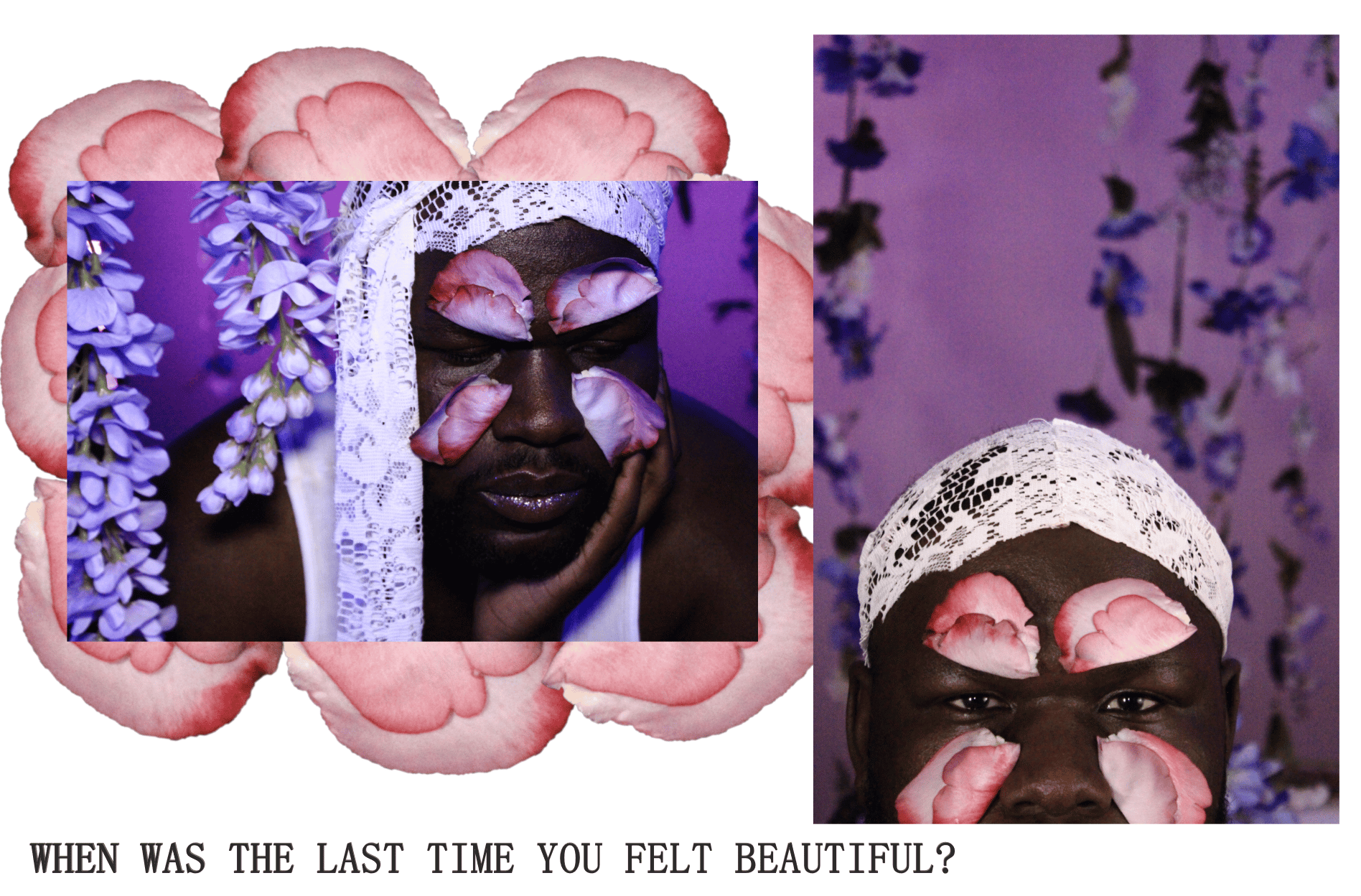
During the shoot, she asked the models about their perceptions of what it meant to be a man, questions like, "When was the last time you cried?" "When was the last time you felt beautiful?" "How often do you tell your male friends that you love them?" She recalled one particularly moving moment when she asked one of the models, Danny Ramos, about how his stepfather showed affection. Ramos talked about how his stepfather always used to ask Ramos about his car -- if he'd changed the oil, or how his tires were doing.
"It took him awhile to realize that that was his stepfather going, 'I love you. I care about you. I'm checking in,'" Pittaluga said. "He just didn't have the terminology or know how to do that without being uncomfortable. So that was his way of showing love."
Outside of the Understudy installation, Pittaluga pointed to one portrait entitled "Machismo Simpatico," one of her favorites. The image shows her niece's boyfriend, Ulises Sanchez, draped in tulle and holding a bouquet of flowers.
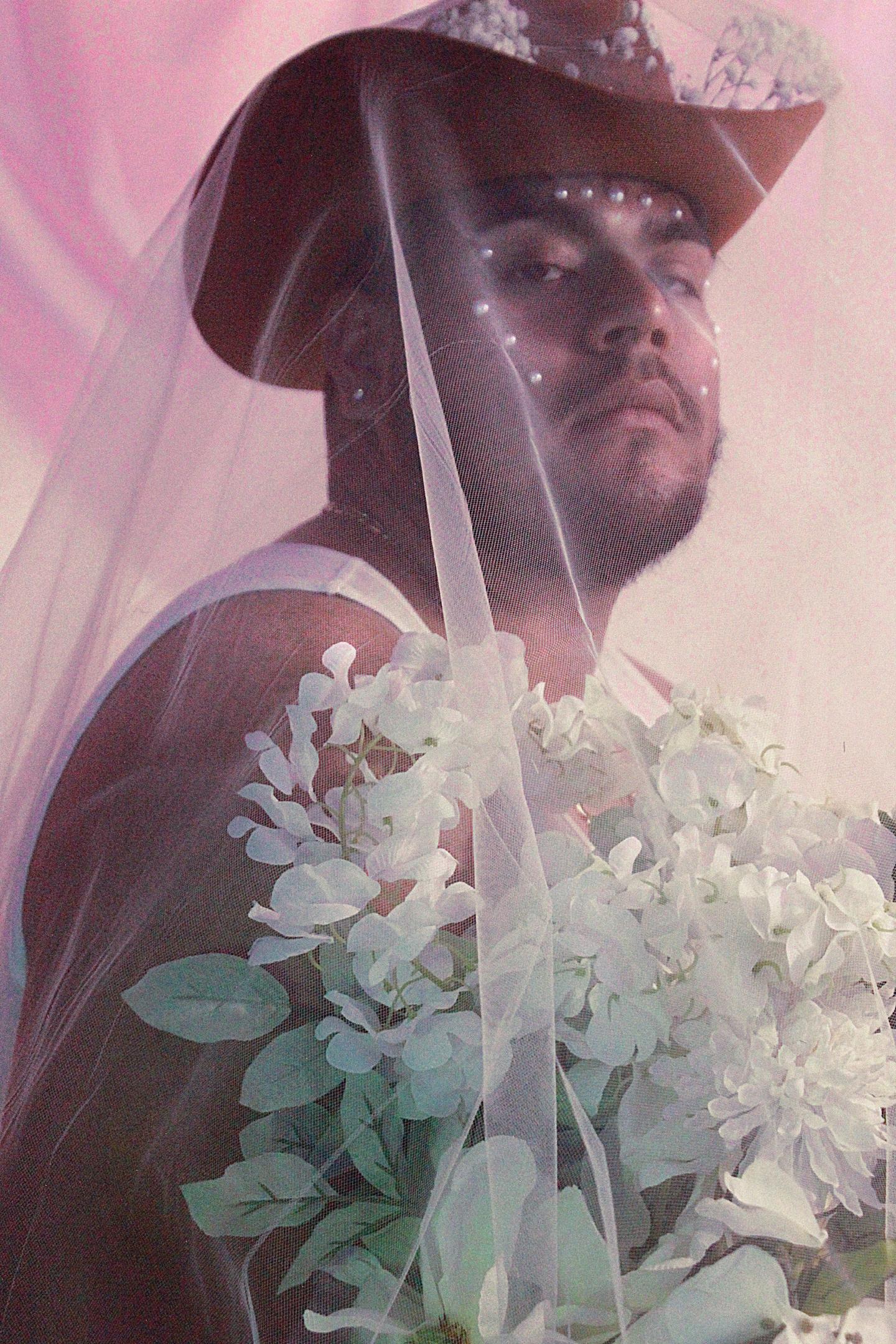
"It's crazy, because he comes from a background where it's super machismo," Pittaluga said.
She conversed with Sanchez about his upbringing, that Sanchez had struggled to embrace his soft side, and that he was expected to be the breadwinner of his family.
"So this was just a beautiful moment. And I just remember him being like, 'Thank you, thank you, thank you, thank you. I don't get this kind of space. This space isn't allowed for me.'"
Looking at Sanchez's portrait, Pittaluga noted how strong he looks. There is a strength in tenderness, she said.
"Being able to own softness as a grown man, and a man of color, is so strong," she said. "That's something else that I brought up to them. I was like, 'You don't understand how strong you look right now. Not only do you look soft, not only do you look pretty, but you look so strong.'"
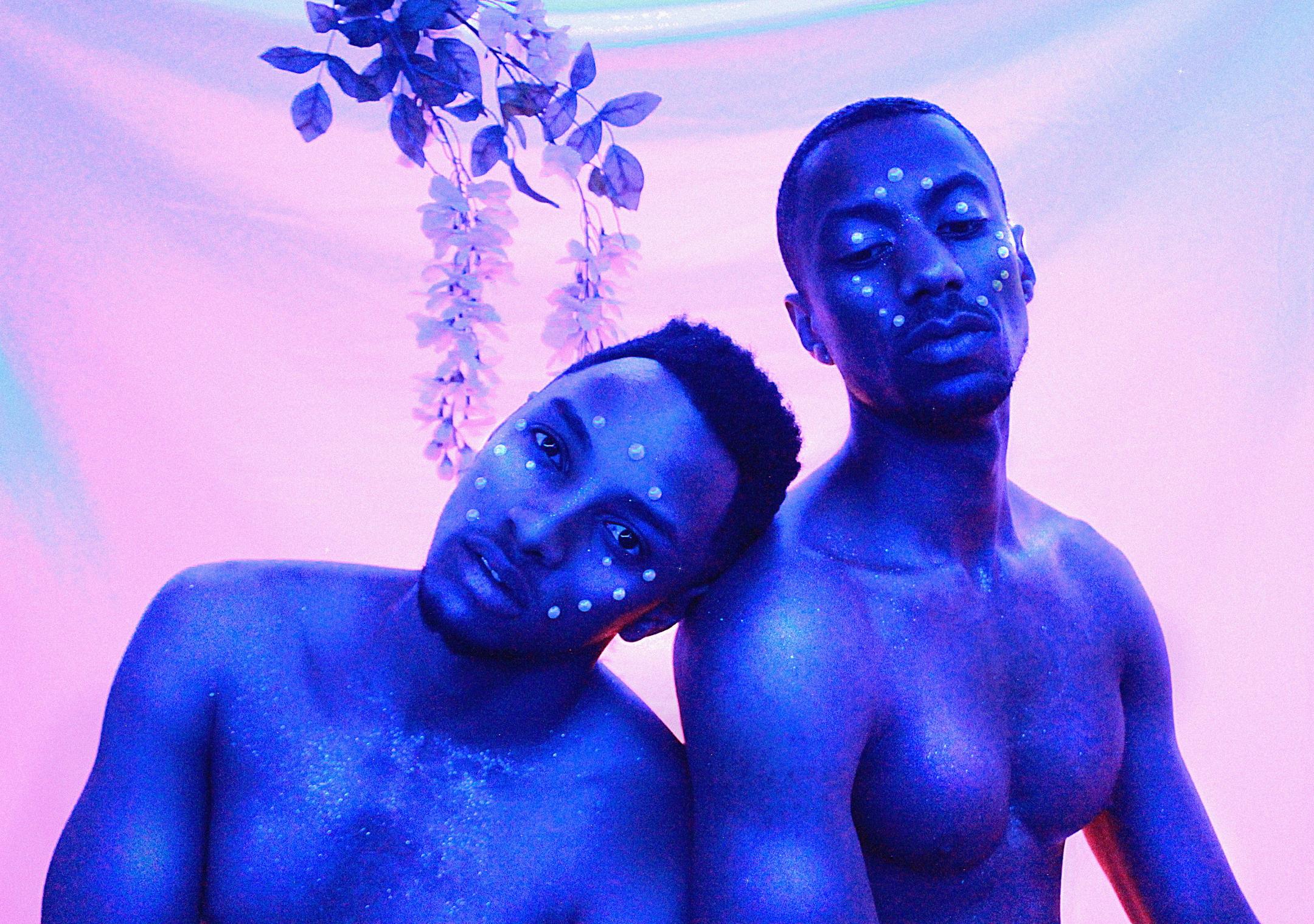
Part of the joy in seeing her models feel beautiful, some of them for the first time, comes from her intense awareness of the lack of positive representation of Black and brown people in the art world. She mentioned Michaelangelo's David, a widely loved work of art that celebrates the beauty of a male body.
"There's not many sculptures of beautiful Black and brown people that are glorified like that," Pittaluga said. More often, they're portrayed in positions of servitude or as being angry or violent.
She said that that misrepresentation leaves a mark over time.
"If you never see people like you in a positive light, or in a soft, tender light, that definitely has a huge impact," she said. "You're gonna not feel positively about yourself."
She worried that people of color often internalize those misrepresentations without even realizing it -- that they absorb them and then project them, not only onto themselves, but onto other people of color, reinforcing negative expectations set by outside communities.
"We're constantly being told by all these outside sources that we are a certain way," she said. "And then we take that, and then we push that onto people in our community.... it just creates this cycle of just negativity."
With these photos, Pittaluga hopes to provide an alternative to those misrepresentations, a way for Black and brown men to view themselves as godlike, beautiful, sensitive and strong, to express their emotions and to allow each other to do the same.
"It really is up to POC communities to take our power back, and to realize the beauty that we hold within ourselves," she said. She hoped "ARE WE STILL COOL?" will help start conversations within POC communities about internalized self-hatred.
Since the series dropped online, it's gotten a lot of attention. Pittaluga said that part of interest could be attributed to the fact that the series happened to land during the new racial justice movement.
"I released it, and it was like, 'This is what we need! We've seen nothing but people being murdered on TV,'" she said. "It's murder porn, right? They love to replay the George Floyd video. They love to replay the Philando Castile video. And so you constantly see that on the news, and then you go on your Instagram feed and you see this."
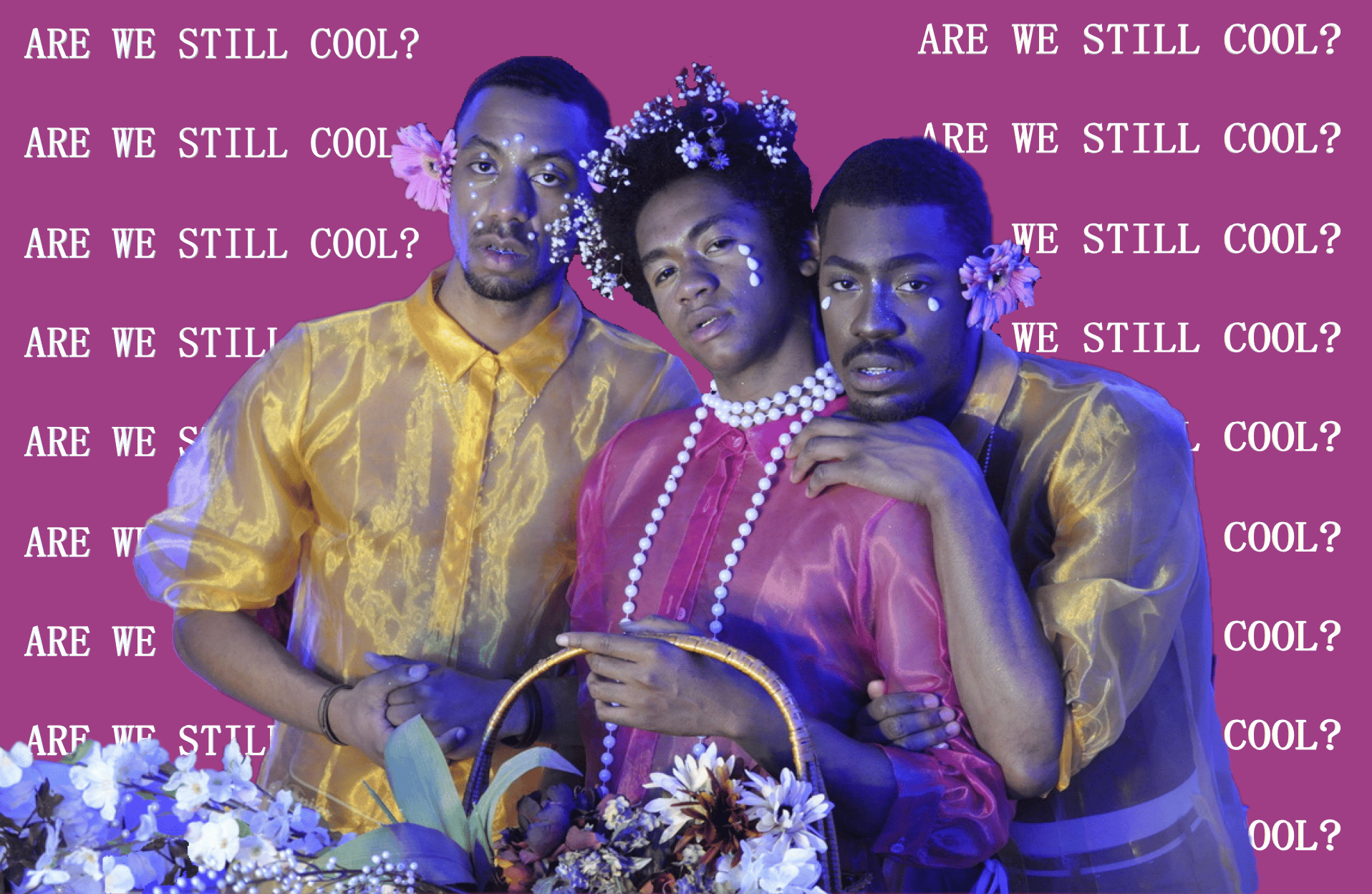
Now, months after the shoot, the models still feel beautiful, she said, and people have been commenting on the photos to tell them as much. But there have also been those who don't get it -- mainly, Pittaluga suspected, people who didn't read the articles she wrote to accompany the photo series.
In one case, an online user asked if the series was some "gay shit." One of the models, Fronzo Gilkey, responded patiently, saying that it was quite the opposite -- that the point of the project was to debunk the cultural standards that led to that assumption. Gilkey then recommended the user read the articles.
"I was really proud," Pittaluga said, adding that all of her models have been responding to those kinds of comments that way.
Pittaluga directed my attention to another print, one that she's called "Generational Embrace." It shows three men, each from a different generation of Pittaluga's own family: her grandfather, her brother and her 14-year-old nephew. The three of them are clasping hands. Each wears a white lace do-rag.
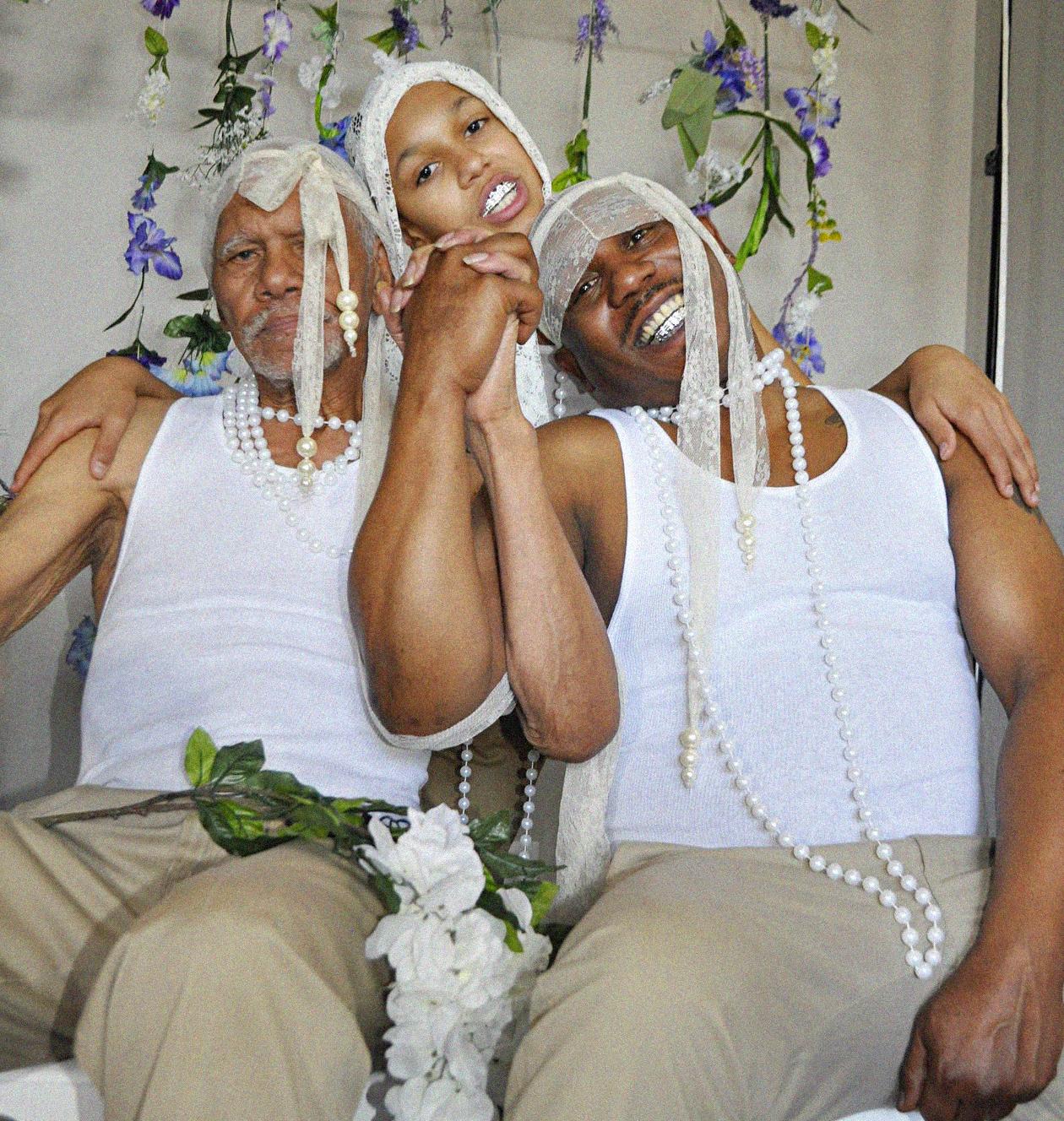
Pittaluga tells me that staging that photo was deeply emotional for her. Her grandfather was born in the 1930s, grew up on a farm and was raised with a "provider" mentality.
"It was just really beautiful that he was willing to sit there and hold hands with them, and be tender and soft, because growing up, if that would have been seen, he could have had rocks thrown at him," she said. "So the impact of seeing him sitting there, holding flowers, and being gentle... It just hit so different for me. It was super-beautiful."
Before "ARE WE STILL COOL?" Pittaluga had a hard time even beginning a conversation with her family about the standards to which they held men and boys. Now, she said the conversation is ongoing. Her family members call each other out on toxic behavior. She's even had family members reach out to thank her for bringing these issues to their attention. One of them was an uncle who, growing up, she'd often observed telling her cousins to stop crying.
"He's called me since then multiple times, and he's been like, 'I want to thank you, because you called me out without actually having to call me out. And I see the faults in my ways now, and I'm gonna go forth and change.'"
And Pittaluga's brother, who helped inspire the project, has thanked her numerous times for starting a discussion between him and his own son.
"Teenage boys can be so toxic," Pittaluga said. "You know, they say, 'That's gay.' Like, that's their favorite phrase. So he has really been grateful that this gave the opportunity to talk about this."
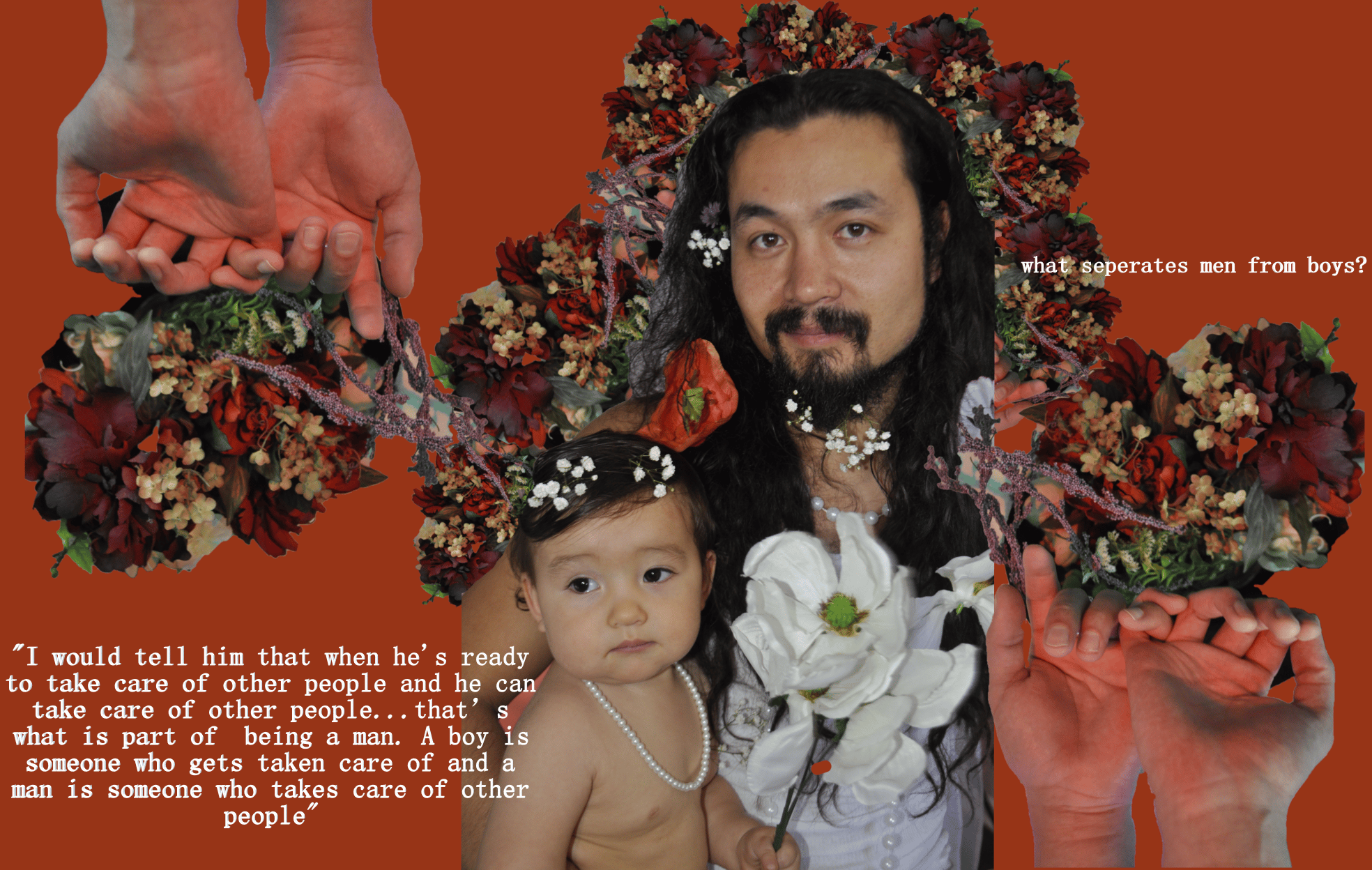
Pittaluga hoped that having these conversations, not just with adults and community leaders, but with younger people who are more open to new ideas, will help create sustainable change. She hoped that in twenty years, society will have healthier standards for men of color.
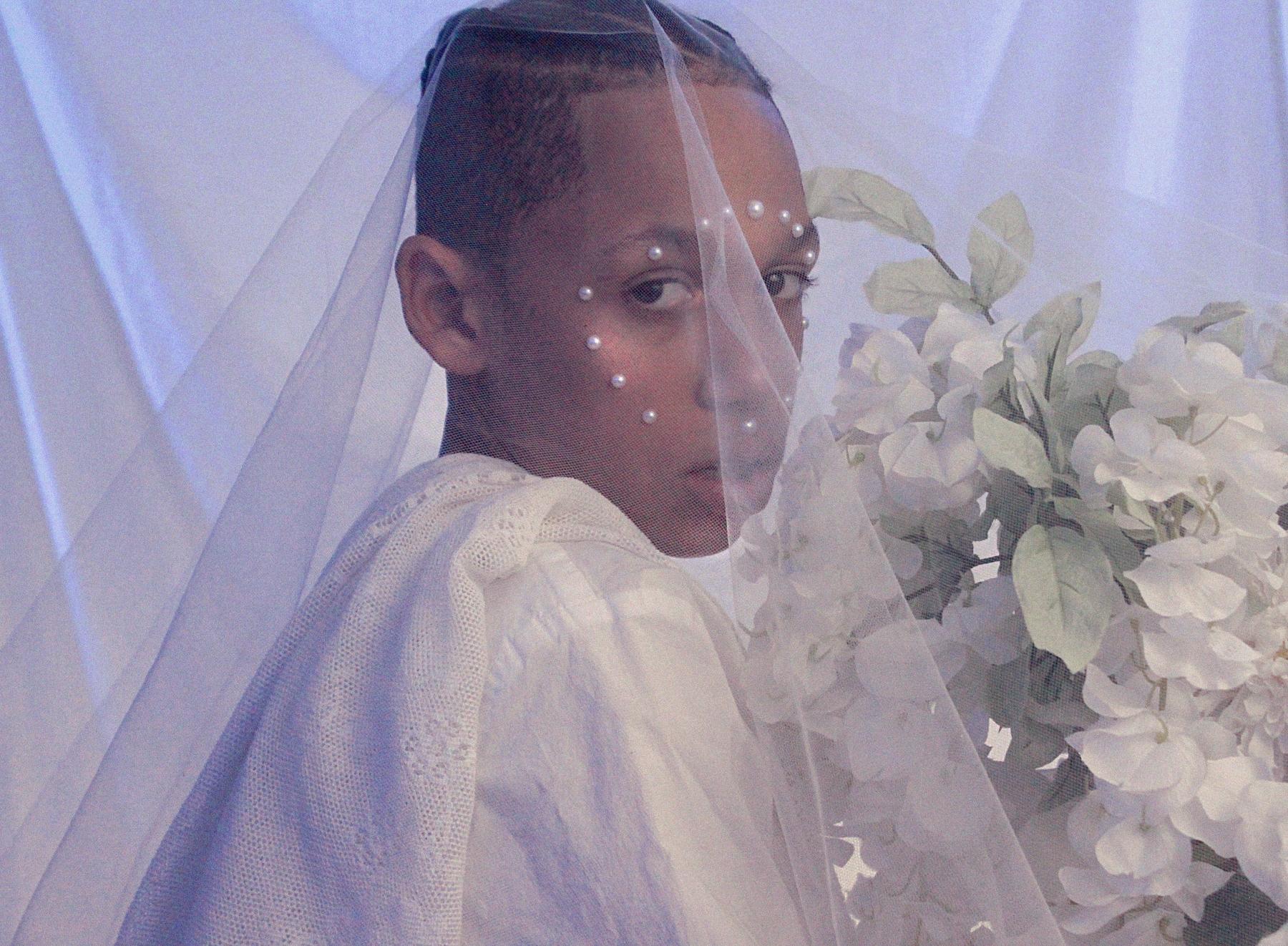
"I want to just manifest and be like, my five-year-old nephew will be able to stay tender without feeling like that's a problem," she said.
Her nephew is both Black and Indigenous, and she worried about the weight he'll one day have to carry, about the expectations society might place on him.
"I hope that he's going to be able to get the tools to go, 'It's okay for me to cry.'"
"ARE WE STILL COOL?" will be available for viewing at Understudy through August 31. You can also view the entire series here


